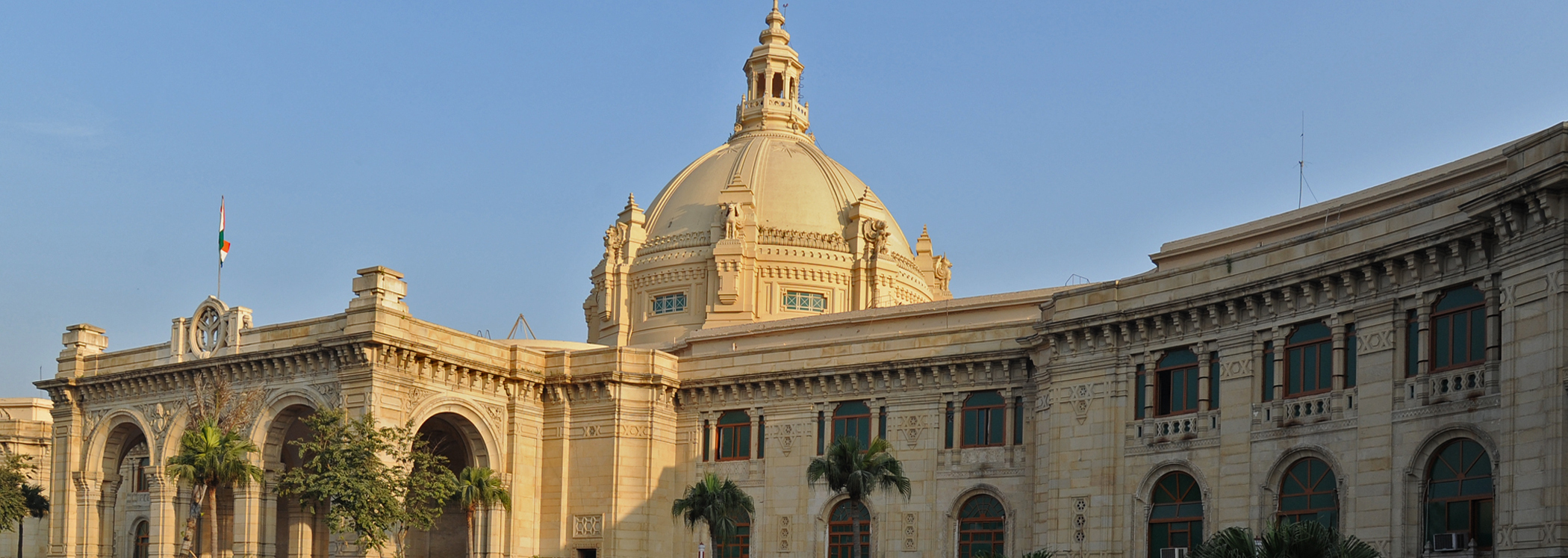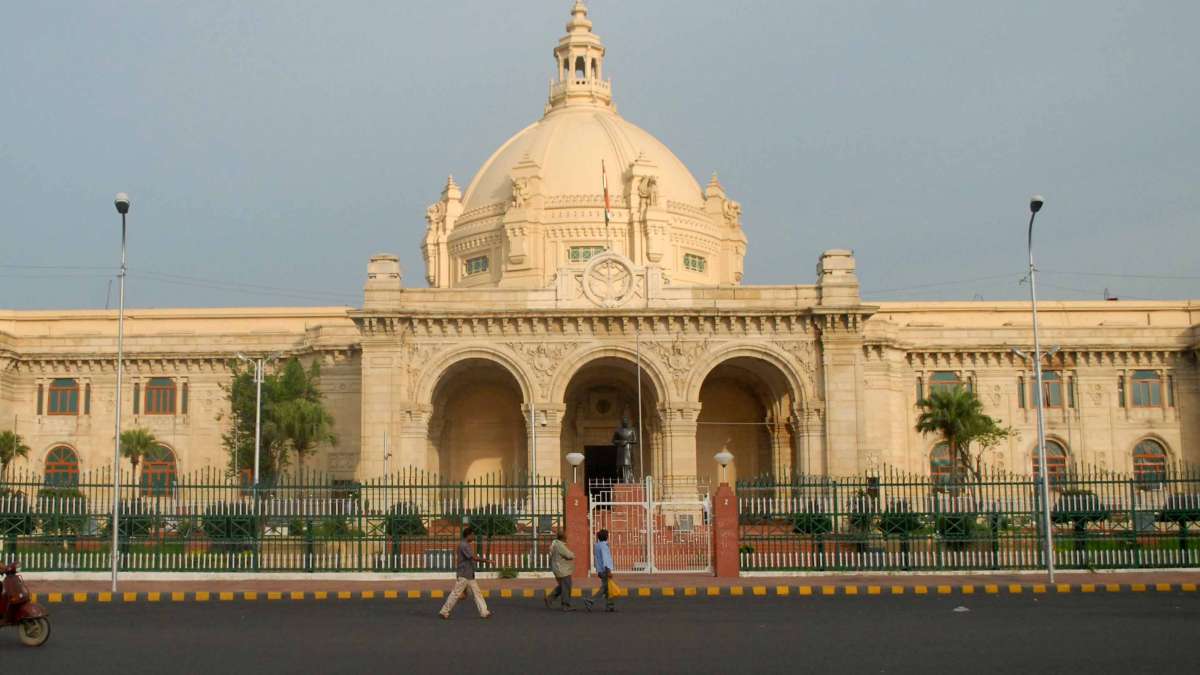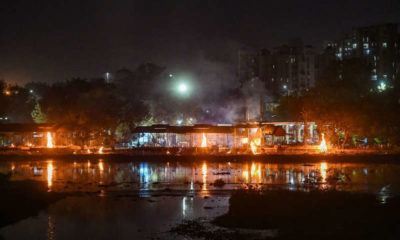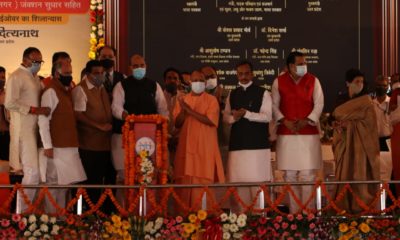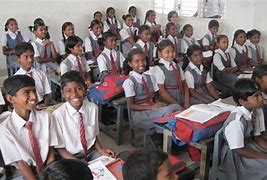Feature
Three caste-based political parties will be critical in final phase of LS polls
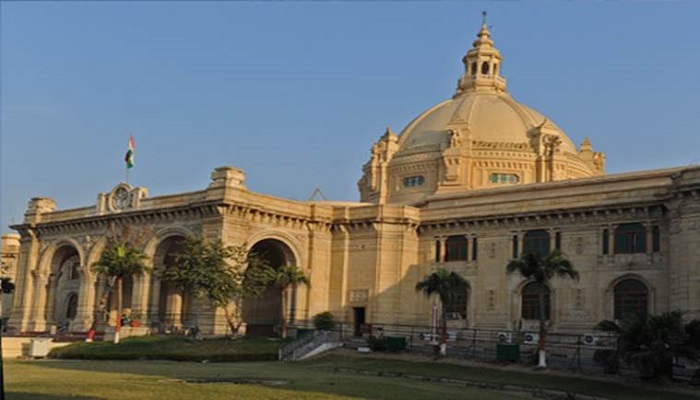
Lucknow: Apna Dal, Suheldev Bhartiya Samaj Party (SBSP) and the Nishad Party. These are the three caste based political outfits that will decide the outcome of elections to the Lok Sabha in the final phase.
These three parties have forced the elections in eastern Uttar Pradesh to be contested on caste arithmetic.The Apna Dal is a Kurmi-based outfit and its area of influence extends from Varanasi, Mirzapur to Allahabad and Pratapgarh.
The Apna Dal, led by Union Minister Anupriya Patel, is with the Bharatiya Janata Party (BJP) while its breakaway faction led by Anupriya’s mother Krishna Patel is in alliance with the Congress.
The Anupriya Patel-led Apna Dal is contesting two seats – Mirzapur and Robertsganj – in the final phase and is ensuring Kurmi support to the BJP.
The Suheldev Bhartiya Samaj Party (SBSP) was a BJP ally till recently when its President Om Prakash Rajbhar declared that he was snapping ties with BJP and fielding his own candidates in the elections.
The SBSP’s area of influence is in districts like Ghazipur, Mau, Varanasi and Ballia. In all these constituencies, Rajbhar voters have a sizeable number – 50,000 to one lakh.
Om Prakash Rajbhar has announced his support to Congress in Mirzapur form where Anupriya Patel is contesting. Political pundits are now speculating the extent of damage that Rajbhar could cause the BJP in the final phase.
Three caste based political outfits will play critical roll in final phase of LS polls:
The Nishad Party, which has emerged as a force to reckon with in recent months, enjoys the support of the Nishad community in Gorakhpur and in districts along the Ganga river.
It was Nishad Party leader Pravin Nishad who had contested on a Samajwadi ticket and won the Gorakhpur seat in a by-election last year. He has now joined the BJP.
Though the Nishad Party is supporting the BJP, the Nishad community, by and large, is upset with the BJP which has not fulfilled its promise of installing a statue of Nishad Raj in Gorakhpur.
It is noteworthy that the BJP had scripted its victory in 2014 and 2017 UP Assembly elections by bringing SBSP and Apna Dal into its fold and projecting a pro-OBC image.
The caste slant in the final phase of elections is evident from the fact that even Prime Minister Narendra Modi had to underline the fact that he belonged to the OBC category in his election speeches.
The OBC votes in the final phase will play a decisive role since they form almost 40 per cent of the voter population.
Entertainment
Meghalaya Reserves Legalized Gambling and Sports Betting for Tourists

The State Scores Extra High on Gaming-Friendly Industry Index
Meghalaya scored 92.85 out of 100 possible points in a Gaming Industry Index and proved to be India’s most gaming-friendly state following its recent profound legislation changes over the field allowing land-based and online gaming, including games of chance, under a licensing regime.
The index by the UK India Business Council (UKIBC) uses a scale of 0 to 100 to measure the level of legalisation on gambling and betting achieved by a state based on the scores over a set of seven different games – lottery, horse racing, betting on sports, poker, rummy, casino and fantasy sports
Starting from February last year, Meghalaya became the third state in India’s northeast to legalise gambling and betting after Sikkim and Nagaland. After consultations with the UKIBC, the state proceeded with the adoption of the Meghalaya Regulation of Gaming Act, 2021 and the nullification of the Meghalaya Prevention of Gambling Act, 1970. Subsequently in December, the Meghalaya Regulation of Gaming Rules, 2021 were notified and came into force.
All for the Tourists
The move to legalise and license various forms of offline and online betting and gambling in Meghalaya is aimed at boosting tourism and creating jobs, and altogether raising taxation revenues for the northeastern state. At the same time, the opportunities to bet and gamble legally will be reserved only for tourists and visitors.
“We came out with a Gaming Act and subsequently framed the Regulation of Gaming Rules, 2021. The government will accordingly issue licenses to operate games of skill and chance, both online and offline,” said James P. K. Sangma, Meghalaya State Law and Taxation Minister speaking in the capital city of Shillong. “But the legalized gambling and gaming will only be for tourists and not residents of Meghalaya,” he continued.
To be allowed to play, tourists and people visiting the state for work or business purposes will have to prove their non-resident status by presenting appropriate documents, in a process similar to a bank KYC (Know Your Customer) procedure.
Meghalaya Reaches Out to a Vast Market
With 140 millions of people in India estimated to bet regularly on sports, and a total of 370 million desi bettors around prominent sporting events, as per data from one of the latest reports by Esse N Videri, Meghalaya is set to reach out and take a piece of a vast market.
Estimates on the financial value of India’s sports betting market, combined across all types of offline channels and online sports and cricket predictions and betting platforms, speak about amounts between $130 and $150 billion (roughly between ₹9.7 and ₹11.5 lakh crore).
Andhra Pradesh, Telangana and Delhi are shown to deliver the highest number of bettors and Meghalaya can count on substantial tourists flow from their betting circles. The sports betting communities of Karnataka, Maharashtra, Uttar Pradesh and Haryana are also not to be underestimated.
Among the sports, cricket is most popular, registering 68 percent of the total bet count analyzed by Esse N Videri. Football takes second position with 11 percent of the bets, followed by betting on FIFA at 7 percent and on eCricket at 5 percent. The last position in the Top 5 of popular sports for betting in India is taken by tennis with 3 percent of the bet count.
Local Citizens will Still have Their Teer Betting
Meghalaya residents will still be permitted to participate in teer betting over arrow-shooting results. Teer is a traditional method of gambling, somewhat similar to a lottery draw, and held under the rules of the Meghalaya Regulation of the Game of Arrow Shooting and the Sale of Teer Tickets Act, 2018.
Teer includes bettors wagering on the number of arrows that reach the target which is placed about 50 meters away from a team of 20 archers positioned in a semicircle.
The archers shoot volleys of arrows at the target for ten minutes, and players place their bets choosing a number between 0 and 99 trying to guess the last two digits of the number of arrows that successfully pierce the target.
If, for example, the number of hits is 256, anyone who has bet on 56 wins an amount eight times bigger than their wager.

